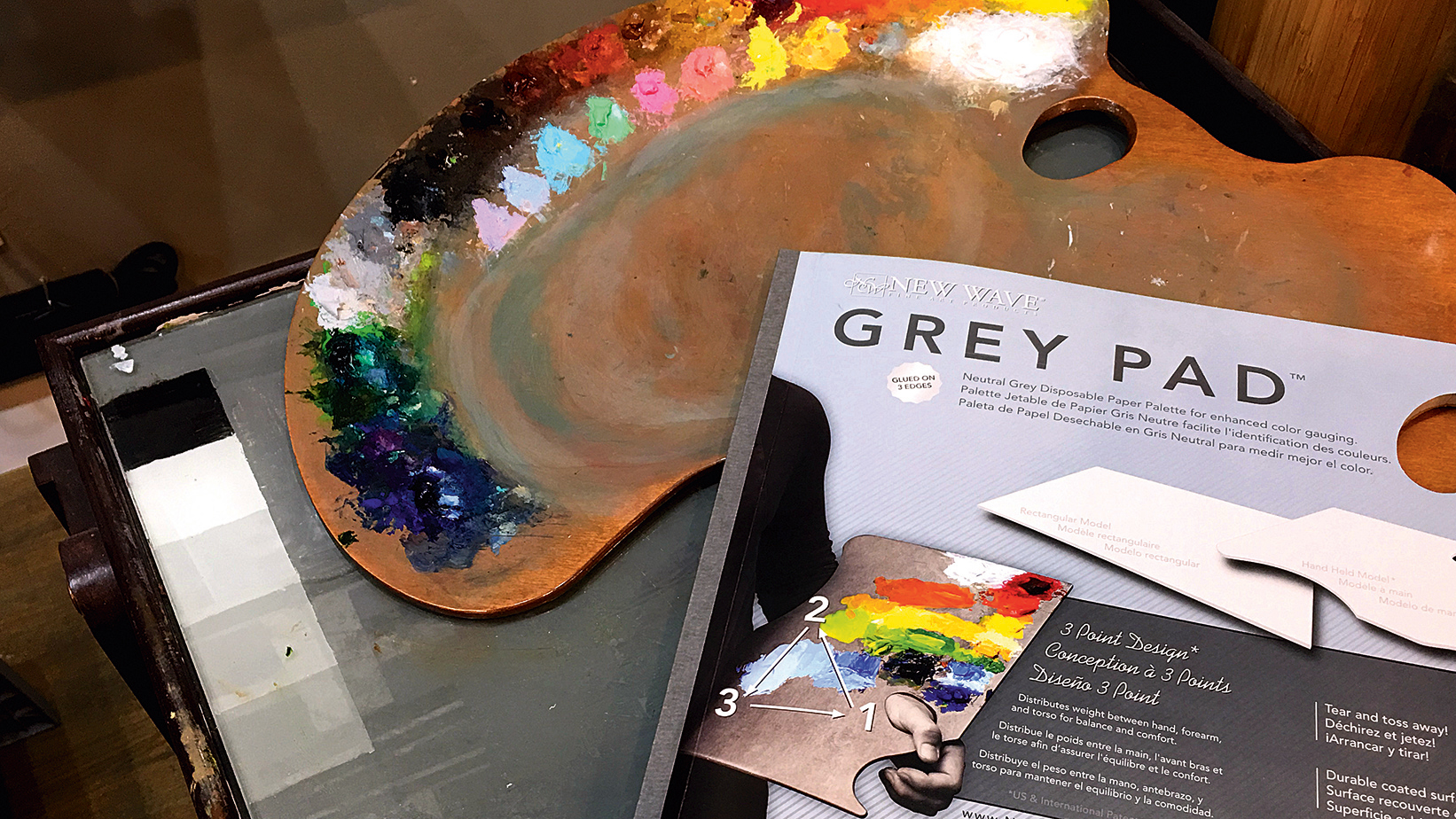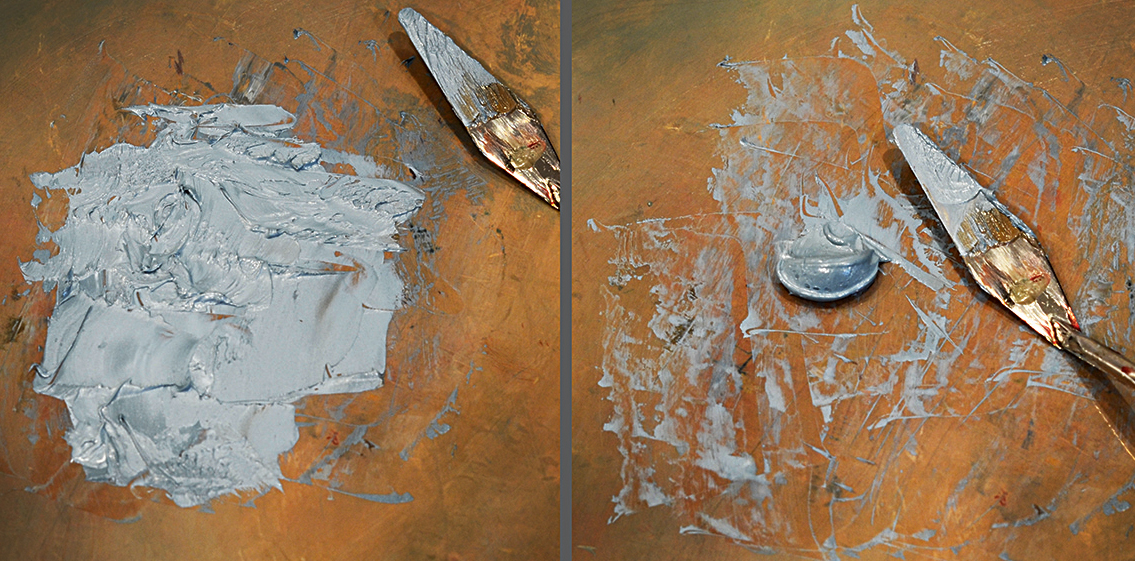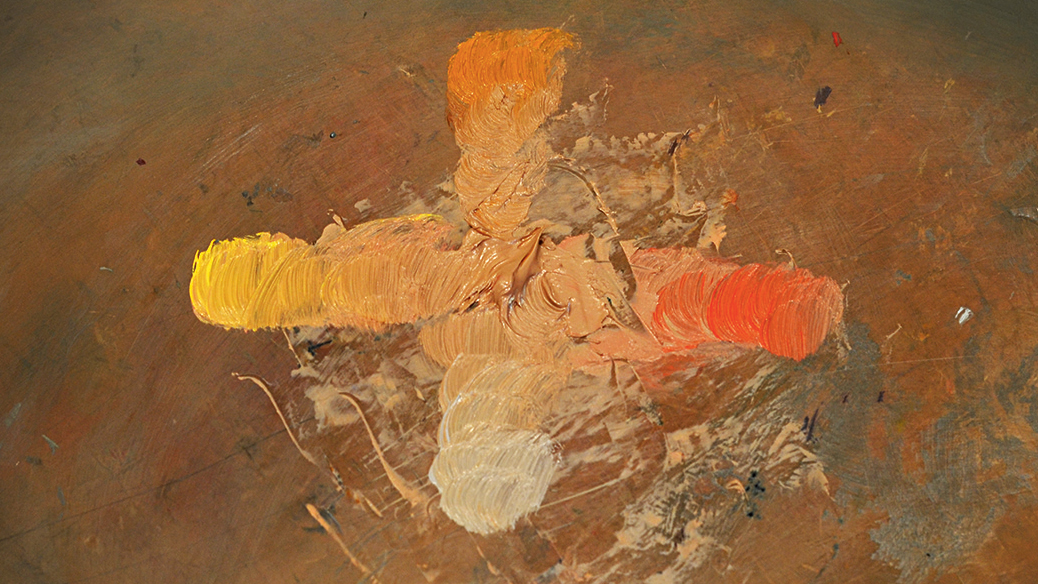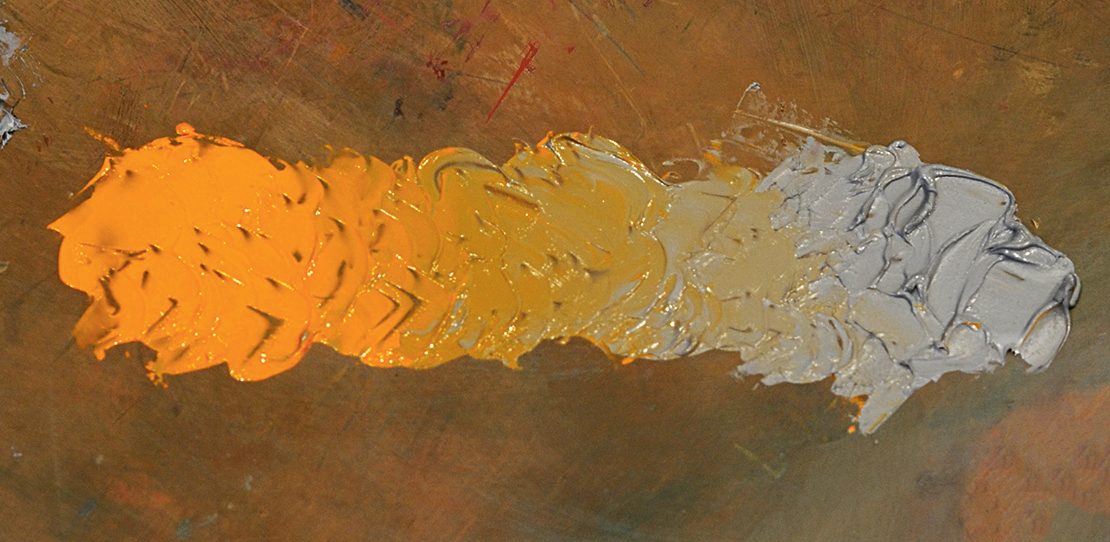How to set up an oil paint palette

To get started with oil paint, you'll need to learn how to set up your oil paint palette. I personally like to arrange my colours from the most intense shades to the less intense, grouped into warm and cool colours.
I’ve seen students squeeze out colour randomly and it becomes tricky to keep things organised as the painting progresses. Choose a layout, stick with it and you won’t have to think about where your colours are.
Once I've got my supplies: a palette, the best oil paints, paint brushes for oils, the best oil paint canvas and one of the best easels, I’ll mix up a pile (or nut) of paint and make adjustments to the pile by mixing colour into a portion of it. If you remix the whole pile it can get away from you and then the whole nut is wasted. For example, if I have a base skin tone that I need to make cooler or warmer, I’ll mix into the left and right sides of it, saving some of the original colour. You will find that your colours will stay cleaner if you can mix with two or three colours instead of six or seven. It also helps to reduce the intensity of your colours by mixing in a grey of the same value, instead of mixing in a complement or adding black.
In summary, mix until you have the right colour. Check it, adjust it and then start painting when you’re happy.
How to set up an oil paint palette
01. Be consistent

It isn’t critical how you arrange colours, as long as you’re consistent so that you know where your colours are. Some artists pair warm and cool versions of each colour or arrange them in a ROYGBIV string with black and white at the ends. I recommend keeping things organised and consistent.
Bear in mind that painting can be difficult; working with thin, meagre piles of paint makes the process even harder. Make your life easier and use a decent amount of paint on your palette.
02. Mix on your palette

Use a palette knife rather than your brush to mix larger paint piles. This will help keep paint out of your brush ferrule (the metal collar that holds the bristles). Keep the mixed paint organised and if you need to, scrape your palette down so you have a clean space to mix colours.
03. Keep your mixes versatile

When adjusting paint on your palette, mix into a portion of your pile, rather than the whole thing. The benefits are three-fold: it gives you more painting options, provides you with a visual history of your mixes, and if you mess the colour up you don’t lose the whole pile.
04. Reduce the chroma

When painting from life, most colours out of the tube will be too intense. I find that it’s best to reduce my colour by mixing in a grey of the same value, rather than mixing in a complement or black. Colours stay cleaner and you can control the values more easily.
05. Store your oil paint

Extend your paint’s life by keeping it in a freezer or fridge. If your palette doesn’t fit or space is limited, transfer your paint to wax paper and put all the paint in a row, then roll it up to reduce the amount of space it takes up.
This article originally appeared in Paint & Draw: Oils. Buy Paint & Draw: Oils bookazine at Magazine Direct.
What is oil paint?
Oil paint is pigment bound in a drying (siccative) oil. The most common is linseed oil extracted from flax seeds, but you’ll also find paint bound in walnut, safflower or other oils. The pigments are generally the same as those found in watercolours, pastels and acrylics. Oil paints offer a richness of colour and its surface allows the creation of beautiful textures. You can paint thick or thin, directly or use glazes. Oils can be used on paper, wood, metal, plastic, canvas and many other surfaces.
Daily design news, reviews, how-tos and more, as picked by the editors.

Howard has worked in the video game industry as a concept artist and art director. He has also freelanced on properties like Magic: the Gathering and Warcraft, as well as worked as a fine artist for galleries.
